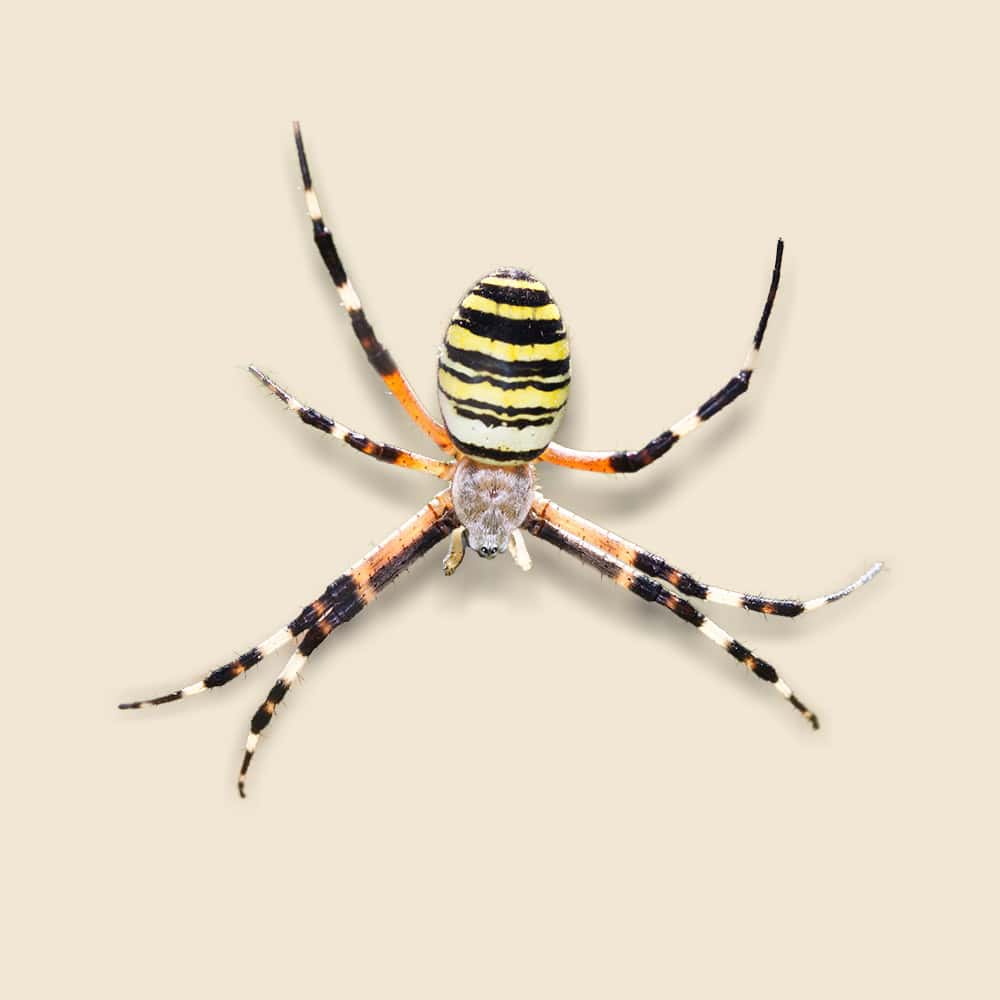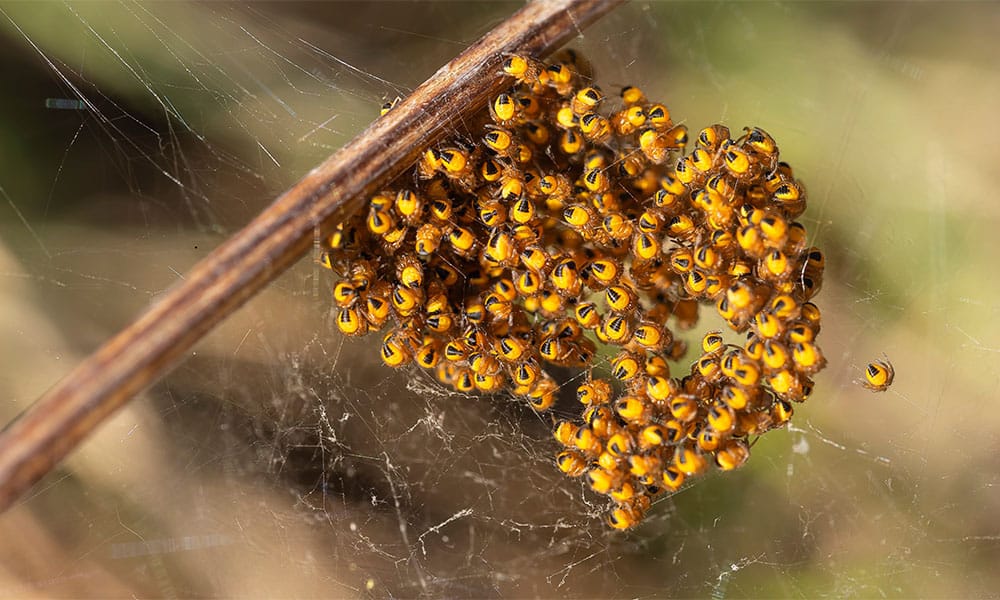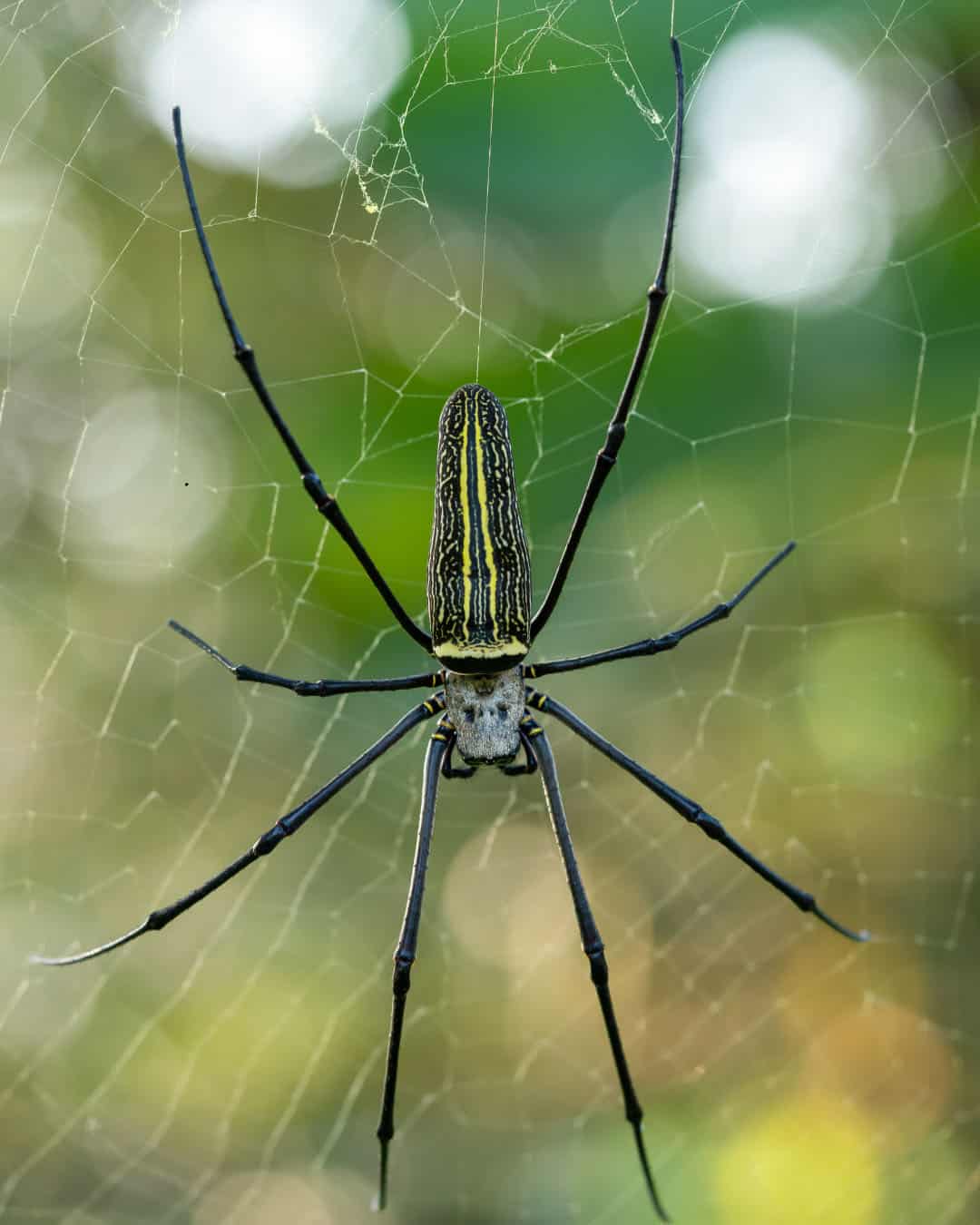Orb Weaver Spider Facts & Information
Garden orb weavers are large, colorful spiders known for spinning intricate, circular webs in gardens, yards, and outdoor spaces. These spiders are generally harmless to humans and help control pest insect populations, though their webs can be a nuisance when built near walkways or entryways.

Araneidae
What You Need To Know About Orb Weaver Spiders
What do mud daubers look like?
Mud daubers are slender, wasp-like insects that are typically black or metallic blue, often with yellow markings. They have a distinct, narrow waist that connects the thorax and abdomen. Adults are usually about 1 inch in length.
What do mud daubers eat?
Adult mud daubers primarily feed on nectar and other sugary substances. They are also known to consume honeydew from aphids. The larvae, on the other hand, are fed paralyzed spiders that the female mud dauber captures and places in the nest.
What sort of habitat do mud daubers live in?
Mud daubers build their nests out of mud, usually on sheltered surfaces such as under eaves, in attics, garages, sheds, and other structures. They prefer areas that are protected from rain and direct sunlight.
How do mud daubers commonly behave?
Mud daubers are solitary wasps and do not defend their nests aggressively, making them less likely to sting humans compared to other wasp species. They are skilled hunters, paralyzing spiders with their sting to provide food for their developing larvae.
Did you know this about mud daubers?
Mud daubers play a beneficial role in controlling spider populations, as they capture and paralyze spiders to feed their young. Their nests, which resemble small, tubular mud structures, can often be seen in sheltered areas around homes and buildings. Additionally, mud daubers are known for their unique nesting behavior, creating individual cells within their nests for each egg they lay.
Understanding Orb Weaver Spider Infestations
Understanding garden orb weaver infestations is essential for proper management. These spiders are often orange, brown, or yellow, with unique patterns on their abdomen. They create large, wheel-shaped webs, usually in the evening, to catch flying insects like moths, flies, and beetles. While they prefer to stay outdoors, orb weavers may occasionally be found near homes, especially if bright lights attract insects. Though not aggressive, their size and web-building habits can make them unwelcome near human activity.

How Hearts Handles Orb Weaver Spider Treatment
Hearts Pest Management employs an integrated pest management approach to handle Garden Orb Weaver infestations.
Garden Orb Weaver Inspection
Garden Orb Weaver Treatment
Garden Orb Weaver Prevention
Educational Resources

Think You Might Have a Orb Weaver Spider Infestation?
At Hearts Pest Control, we understand the challenges associated with Orb Weaver Spider infestations and are here to provide professional solutions tailored to your needs. Flourishing in warm and humid climates, they are prevalent in many regions, including San Diego County, Orange County, and Los Angeles County.